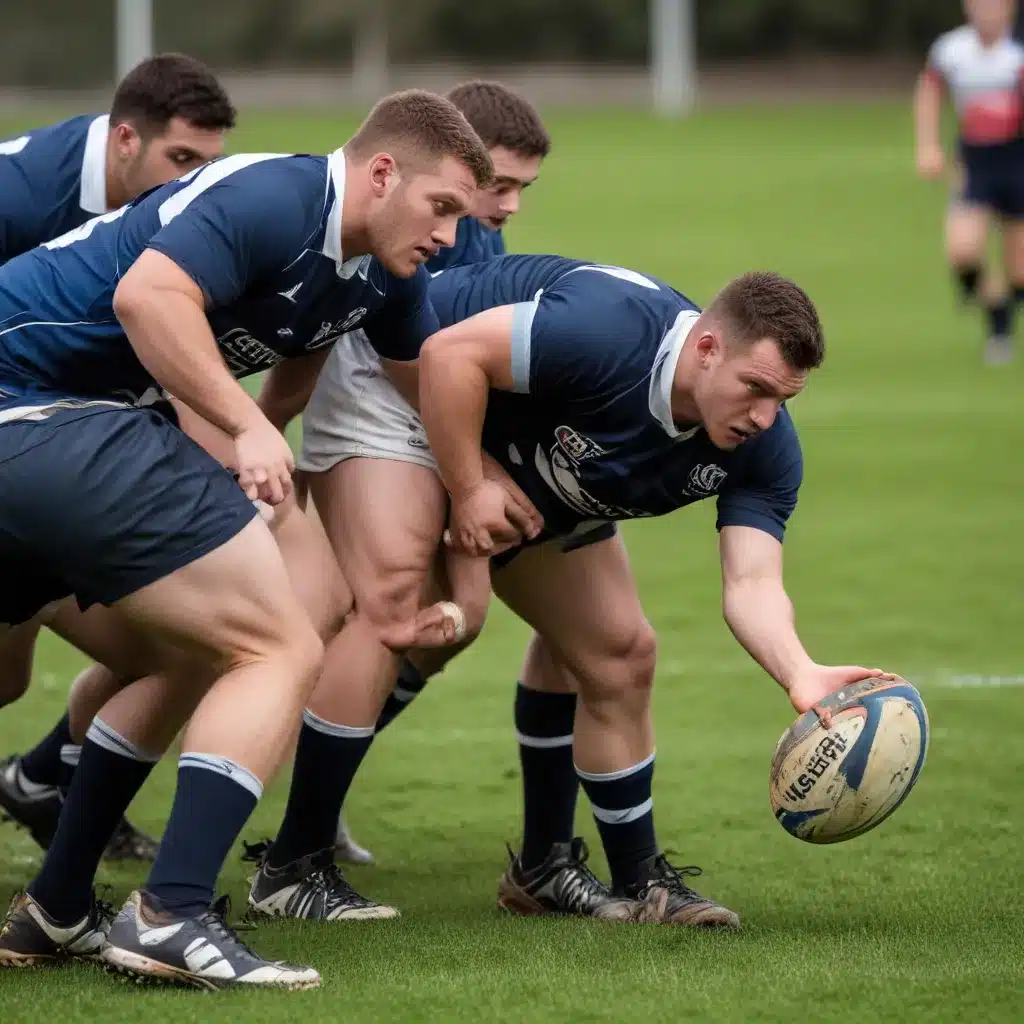
Improving Rugby Defensive Positioning: Drills for Effective Line Speed
Importance of Defensive Positioning in Rugby
As a seasoned rugby professional, I know that effective defensive positioning is the backbone of a successful team. Maintaining an organized defensive line with robust line speed is crucial for denying attackers space and stifling their momentum. When players are disciplined in their defensive duties and work cohesively as a unit, it creates an impenetrable wall that frustrates the opposition.
At the heart of a solid defensive system are the fundamental principles of body alignment, communication, and coordination. By mastering these core elements, players can develop the positioning skills and reactive mindset required to shut down attacking threats. In this article, we’ll explore a range of drills and tactical considerations to help elevate your team’s defensive performance.
Fundamental Defensive Principles
Alignment and Body Position: Proper body alignment and stance are the foundation of effective defense. Players must maintain a balanced, athletic position with shoulders square to the target, weight evenly distributed, and feet shoulder-width apart. This stable base allows them to react quickly, generate power for dominant tackles, and withstand the impact of collisions.
Paying close attention to shoulder placement is also key. Defenders should aim to make contact with their near shoulder, funneling the ball-carrier towards supporting teammates. Correct foot positioning, with the lead foot angled slightly inwards, helps players drive forward with purpose and authority.
Communication and Coordination: Successful defensive structures are built on clear, frequent communication between teammates. Verbal cues, hand signals, and visual awareness all play a vital role in organizing the defensive line, anticipating threats, and reacting in unison.
Defenders must constantly communicate their roles, responsibilities, and any changes in the defensive system. This allows the entire team to adjust seamlessly, closing down passing lanes and denying time and space for the attack. Coordinated, collective movement is the hallmark of a well-drilled, disciplined defensive unit.
Drill Progressions for Improving Line Speed
Footwork and Acceleration Drills: Developing the footwork and acceleration required for rapid defensive line speed begins with focused agility training. Incorporate lateral movement exercises, change-of-direction drills, and sprinting drills to sharpen the players’ ability to close down space and pressurize the attack.
One effective drill is the “Defensive Shuffle” – set up a series of cones in a zig-zag pattern and have players shuffle laterally, reacting to your directional cues. Emphasize short, choppy steps, explosive bursts of speed, and the ability to quickly change direction.
Defensive Line Drill Variations: Progress to more game-specific defensive line drills to reinforce the principles of alignment, communication, and coordinated movement. Begin with a static defensive line, then gradually introduce more complex scenarios, such as attacking runners, support lines, and decision-making under pressure.
In the “Defensive Wall” drill, divide your players into two teams – one as the attacking unit, the other as the defensive line. The attackers attempt to break through the defensive wall, while the defenders must work together to maintain their alignment and shut down the space. Emphasize clear communication, disciplined body position, and a relentless, aggressive mindset.
Player Roles and Responsibilities
Forwards and their Defensive Duties: The forwards play a crucial role in anchoring the defensive line and initiating contact. They must take ownership of the “tackle, ruck, and maul” areas, committing the necessary numbers to secure the breakdown and deny the opposition quick ball.
Forwards should be drilled in techniques such as dominant tackling, effective jackaling, and clearing out rucks with intent. Establishing a strong forward presence in these core defensive actions sets the tone for the entire defensive effort.
Backs and their Defensive Contribution: While the forwards provide the physical foundation, the backs are responsible for covering space, closing gaps, and making timely defensive transitions. Their role is to read the attacking shapes, anticipate the play, and position themselves to provide both primary and drift cover.
Backs must demonstrate excellent footwork, body positioning, and communication to coordinate their defensive duties. Drill them in lateral movement, timing of their defensive jumps, and the decision-making required to shut down overlaps and support lines.
Tactical Considerations for Defensive Positioning
Adapting to Different Attacking Patterns: Effective defensive positioning requires the ability to adapt to a variety of attacking strategies. Whether facing a dominant forward pack, a slick backline, or a well-drilled kicking game, defenders must be able to recognize the threats and adjust their system accordingly.
Emphasize the importance of reading the attacking cues, recognizing the opposition’s patterns, and making the necessary tactical adjustments to counter their approach. Incorporate game-specific scenario drills that challenge players to problem-solve and make split-second decisions.
Adjusting to Field Position and Game Situation: The defensive positioning and organization must also be tailored to the game situation and field position. In the red zone, for example, the defensive line may need to be more compressed to deny the attack close-range opportunities, while in the midfield, the focus could shift to maintaining a solid defensive line and covering the width of the field.
Encourage your players to be constantly assessing the field, communicating any changes, and making the necessary positional and alignment adjustments. A resilient, adaptable defensive unit is the hallmark of a successful rugby team.
By incorporating these drills and tactical considerations into your training program, you can elevate your team’s defensive positioning and line speed to new heights. Remember, effective defense is not just about physical dominance – it’s a mindset, a collective effort, and a constant pursuit of organizational excellence. With dedication and discipline, your players will develop the defensive skills and decision-making required to shut down even the most potent attacking threats.
For more rugby insights and coaching resources, be sure to visit the Aberdeenshire RFC blog. Together, we can elevate the game and inspire the next generation of rugby champions.
